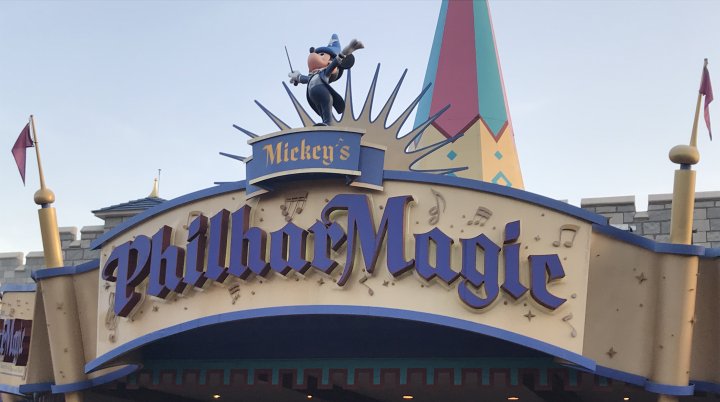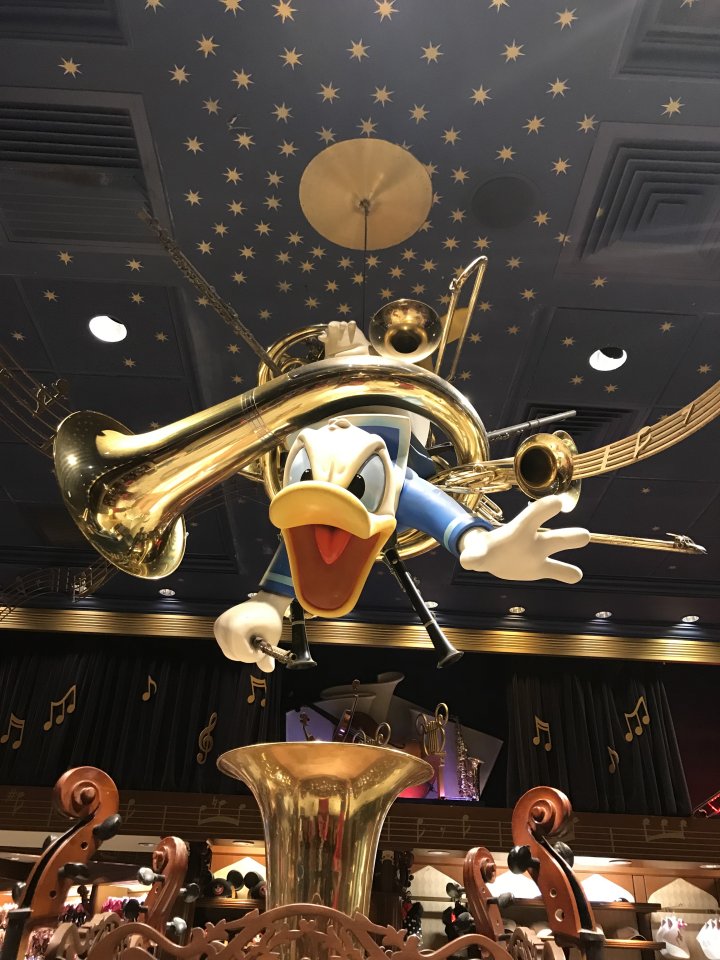TYSVC: Post-Shows – Mickey’s PhilharMagic
A thread https://abs.twimg.com/emoji/v2/... draggable="false" alt="⬇️" title="Pfeil nach unten" aria-label="Emoji: Pfeil nach unten"> https://imagineeringtoolbox.wordpress.com/2021/04/23/tysvc-post-shows-mickeys-philharmagic/">https://imagineeringtoolbox.wordpress.com/2021/04/2...
https://abs.twimg.com/emoji/v2/... draggable="false" alt="⬇️" title="Pfeil nach unten" aria-label="Emoji: Pfeil nach unten"> https://imagineeringtoolbox.wordpress.com/2021/04/23/tysvc-post-shows-mickeys-philharmagic/">https://imagineeringtoolbox.wordpress.com/2021/04/2...
A thread
The last stop in our "Tell Your Story Visual Companion" tour of the Magic Kingdom ( https://disneyworld.disney.go.com/destinations/magic-kingdom/)">https://disneyworld.disney.go.com/destinati... is in Fantasyland, where we& #39;ll see an example of one last Imagineering Storytelling principle: Post-Shows!
Post-shows reinforce the story’s themes and key ideas.
Post-shows often include themed areas or interactive activities or games, like the games at Mission: SPACE ( https://disneyworld.disney.go.com/attractions/epcot/mission-space/)">https://disneyworld.disney.go.com/attractio... and Spaceship Earth ( https://disneyworld.disney.go.com/attractions/epcot/spaceship-earth/)">https://disneyworld.disney.go.com/attractio... at Epcot, but they can take many different forms.
A great place to see an example of a post-show in the Magic Kingdom is Mickey& #39;s PhilharMagic ( https://disneyworld.disney.go.com/attractions/magic-kingdom/mickeys-philharmagic/).">https://disneyworld.disney.go.com/attractio...
Mickey& #39;s PhilharMagic is a 3D movie experience featuring Donald Duck in scenes from several classic Disney animated movies.
As the show starts we see Donald Duck asleep on stage during the setup for a concert featuring a magical orchestra to be conducted by Maestro Mickey Mouse.
When Donald dons Mickey’s Sorcerer’s Hat and decides to try conducting the orchestra himself, he finds himself drawn into a swirling magical maelstrom before ending up chasing after the hat through a sequence of musical scenes including “Be Our Guest” from Beauty and the Beast,…
…“Part of Your World” from The Little Mermaid, “I Just Can’t Wait To Be King” from The Lion King and “You Can Fly” from Peter Pan, "The Sorcerer& #39;s Apprentice" from Fantasia, and "Whole New World" from Aladdin.
Donald eventually finds himself back on the stage, with the orchestra spinning around him in the same maelstrom that took him away.
Mickey Mouse appears, grabs the Sorcerer hat, gets the orchestra under control, and conducts them through a rendition of the Mickey Mouse Club march.
As the orchestra plays, Donald ends up stuck in a tuba, and with the last note of the music, the tuba blows Donald out over the audience where he crashes into the rear wall of the theater.
If the audience turns around they see Donald’s legs sticking out of a hole in the back wall of the theater, where he rocks back and forth a bit, and with a nervous “Uh oh”, falls into the hole.
Click through the slide show below to see Donald falling deeper and deeper into the hole in the wall.
After Donald falls entirely into the hole in the wall, the show ends and guests exit and walk out of the theater up a large ramp, depositing their "opera" (3D) glasses in marked bins.
As they reach the top of the ramp, to the right is the Fantasy Faire gift shop ( https://disneyworld.disney.go.com/shops/magic-kingdom/fantasy-faire/).">https://disneyworld.disney.go.com/shops/mag...
If guests enter the shop, one of the first things they& #39;ll see is a small merchandise display. Hanging from the ceiling above the display is a clustered assortment of musical instruments, including a sousaphone, a trumpet, a trombone, a flute, and a couple of clarinets.
And in the middle of the cluster is none other than Donald Duck, falling forward, a familiar look of irascibility on his face.
This simple little scene, this post-show, reinforces the final scene of the show, when Donald falls into the hole in the wall.
This simple little scene, this post-show, reinforces the final scene of the show, when Donald falls into the hole in the wall.
This particular post-show is also an example of a specific type of post-show, what some in the themed entertainment industry refer to as "Exit through retail", where guests are guided to or through a themed merchandise shop as they exit an attraction.
Some might question whether a merchandise location really qualifies as a post-show, but I think a souvenir like a t-shirt or key chain can help you remember the experience you had on an attraction long after you’ve left the park, and in my view, that’s as valid a post-show as…
…any other. Plus, there’s nothing like a post-show that you can take home with you!
Want to learn more? Check out Tell Your Story the Walt Disney World Way ( https://imagineeringtoolbox.wordpress.com/books/tell-your-story-the-walt-disney-world-way/)!">https://imagineeringtoolbox.wordpress.com/books/tel...
Want to learn more? Check out Tell Your Story the Walt Disney World Way ( https://imagineeringtoolbox.wordpress.com/books/tell-your-story-the-walt-disney-world-way/)!">https://imagineeringtoolbox.wordpress.com/books/tel...
“When the Imagineers tell their stories, they reinforce key ideas and themes from the story to help the audience stay engaged.”
This thread can be read here: https://imagineeringtoolbox.wordpress.com/2021/04/23/tysvc-post-shows-mickeys-philharmagic/">https://imagineeringtoolbox.wordpress.com/2021/04/2...

 Read on Twitter
Read on Twitter



